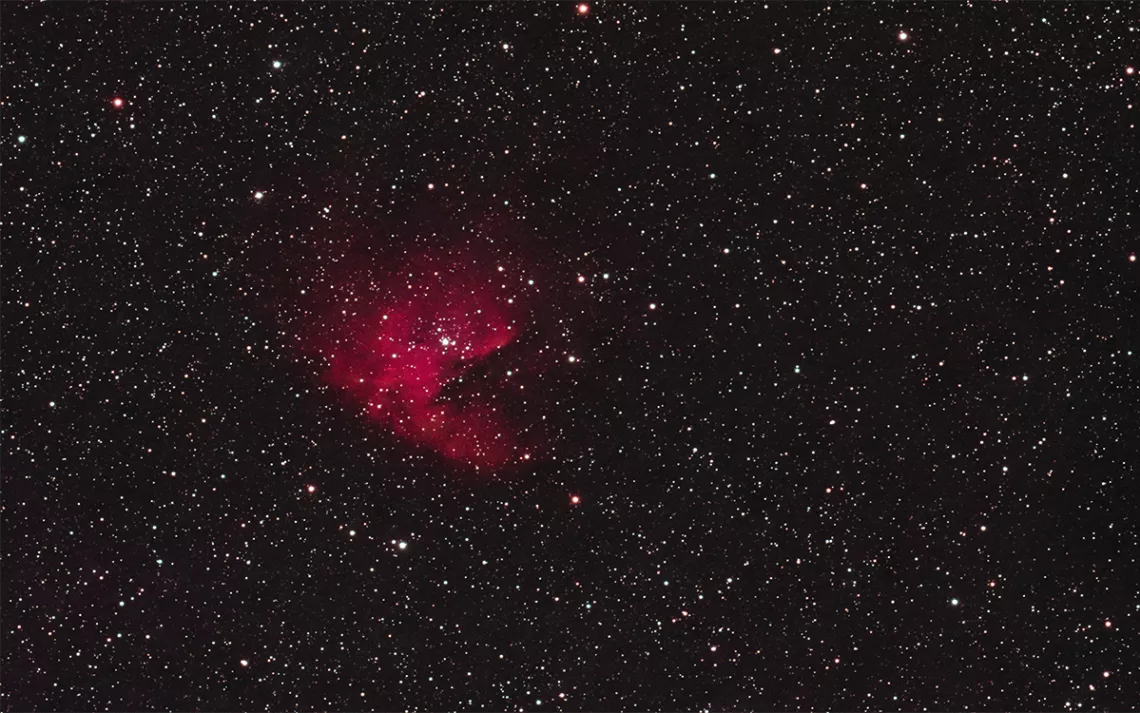October Astronomical Highlights: Hunter’s Moon and Crown of Stars
Lengthening nights means more time to look for distant stars

Photo by davidhajnal/iStock
Our bright beacon in the west, Venus, sets early in October, but Jupiter, Saturn, and Mars are still on display. If you haven’t spotted them yet, the moon will lead the way. On October 11, the point of light closest to the graceful crescent is Jupiter. A few days later, on October 14, the bright object by the moon that looks like a star is Saturn. Then on October 17 and 18, the moon is in the vicinity of reddish Mars.
A Hunter’s Moon Washes Out Meteors and Uranus
The timing of the full moon this month puts a damper on the Orionid meteor shower, which peaks around October 21. The hunter’s moon will brighten the night sky on October 24, washing out faint meteors left behind by the passage of Halley’s Comet. It will also make it harder to spot dim Uranus (magnitude 5.7), which reaches opposition (opposite the sun in our sky) on October 23/24. You’ll have a much better chance to spot Uranus in February when the planet comes within a degree of Mars.
Ursa Major, Corona Borealis, and Perseus
October through February is the time of the year that holds the most darkness. Since our neighboring star is absent for so many hours during this time, it’s worth getting to know some of the more distant suns that give our night sky its heart-lifting, glittery appeal.
Take a look at the northwestern sky after sunset. The Big Dipper is easily recognizable in this region. The Big Dipper is not a constellation but an asterism—a group of stars from a larger constellation, which in this case is Ursa Major, the Great Bear. The bowl part of the dipper is the back half of the bear’s torso, and the handle is its oddly long tail. Can you make out the rest of its body, triangular head, and legs? As the night continues, the bear’s feet will dip below the horizon.
Now use the handle of the Big Dipper and follow its arc down to the bright star near the horizon. This star low in the west-northwest is Arcturus in the constellation Bootes. If you look straight up from Arcturus, you should be able to discern a half-circle shape of stars. This is the constellation Corona Borealis, the Northern Crown. The brightest star near the center (imagine it as the largest diamond in the crown) is the star Alphecca.
Alphecca is 75 light-years away and technically a binary star, though you won’t be able to see its component stars in your binoculars or telescope. The larger star in this binary has a great disc of dust around it and may be in the process of forming planets.
According to mythology, Corona Borealis is the crown that belongs to Ariadne, daughter of King Minos. She was in charge of the labyrinth where sacrifices occurred. Ariadne helped Theseus escape from the maze and the Minotaur. In some stories she is later killed by Perseus.
The constellation of Perseus can also be seen in autumn. It resides under the W shape of Cassiopeia in the northeast. This is a great region of sky to explore with binoculars or a telescope. The famous California Nebula and Double Cluster are both found here. Cassiopeia also houses many clusters and nebulae, including a somewhat faint object known as the Pacman Nebula.
 The Magazine of The Sierra Club
The Magazine of The Sierra Club



